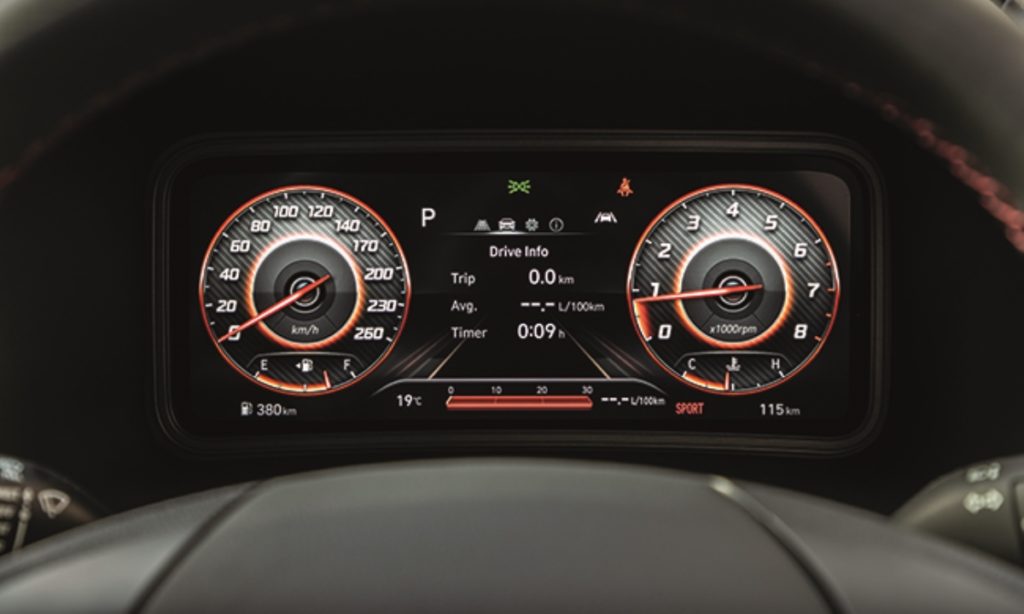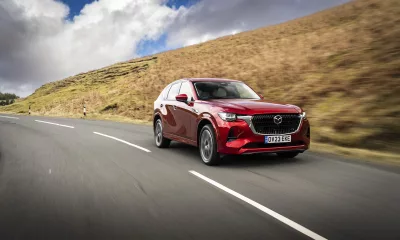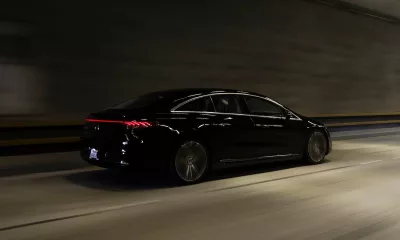You’d be foolish to under-estimate the inroads Hyundai has made in SA in recent years. The South Korean firm’s aggressive strategy of offering feature-laden crossovers and SUVs that undercut their rivals where it matters – in consumer’s pockets – has paid great dividends. In addition to its crossovers, Hyundai’s impressive i30 N hot hatch has garnered much support from performance-minded enthusiasts, thanks to its honest, analogue approach.
That brings us to the new Kona N Line, the refreshed compact crossover headlined by an aggressive new look thanks to its overt body kit and several safety and semi-autonomous features never before seen on this model.
In an attempt to muscle in on more upmarket rivals from Teutonic giants Volkswagen, Audi, BMW and Mercedes-Benz; Hyundai’s top brass has given its likeable crossover a healthy injection of power with the introduction of a 1,6-litre turbopetrol motor, mated to a slick-shifting dual-clutch gearbox.
For local consumption, out goes the reedy 1,0-litre three-cylinder turbopetrol and the 2,0-litre naturally aspirated option comes with a continuously variable transmission only … or IVT in Hyundai speak.
Since its launch in 2018, 1 699 Konas have found happy homes and with this refreshed model, Hyundai is looking to build on that success with the introduction of this “warm” performance model – a bit like BMW’s sub-M offerings – before the potent Kona N arrives early in 2022. Stanley Anderson, sales and operations director of Hyundai Automotive South Africa, says the company’s local arm “expects Kona sales to grow and that this crossover model will take a stronger position in our leisure vehicle line-up”.

And who would bet against that with a name like Kona? True to Hyundai’s style of naming its crossover SUVs after cities – Tucson, Santa Fe, Palisade (oh, wait, that can’t be right) – it is named after the Kona district in Hawaii and is intended to remind customers of Kona coffee, of all things. According to Hyundai, Kona is one of the world’s top three coffee destinations. Who knew? As you sip on your flat white, a quick reminder that the Kona N Line retails for R579 000.
While the Kona Executive already comes with an extensively redesigned exterior, featuring a new bumper and slimmer headlights, the N Line receives a more radical front and rear bumper arrangement with steely LED daytime-running lights, a black roof, distinctive 18-inch alloy wheels – shod with 235/45 Continental Premium Contact 6 rubber – and a jazzed-up cabin with N Line badging and red contrast stitching. It’s as if the Kona N Line has been hitting the gym during lockdown and has emerged flexing its muscles, particularly when viewed side-on. It’s 40 mm longer thanks to its body addenda.
In addition to the N Line’s overt exterior styling, more advanced cabin and enhanced safety features, the new 1,6-litre turbopetrol engine throws down a meaty 146 kW and 256 N.m exclusively to the front wheels.

So, what about that new engine then? Well, we tested the latest configurable drive modes (Eco, Comfort, Sport and Smart) via the switch located on the centre console that deftly trims throttle mapping and steering response. Eco and Comfort do a satisfactory job, but it’s in Sport mode that the full force of its 146 kW appears. Perhaps best labelled as a “warm” performance crossover, the engine felt harmonious with the dual-clutch gearbox and it reveled in snappy changes during its performance testing. With a chirrup from the front wheels, the Kona recorded a fastest zero to 100 km/h sprint time of 8,13 seconds … impressive. Another standout point was the Kona
N Line’s in-gear acceleration figures, hustling from 40 km/h to 60 km/h in just 1,44 seconds, and 60 km/h to 80 km/h in a more-than-brisk 1,74 seconds.
The N Line also made an impression during the braking tests. With 305 mm ventilated disc brakes up front and 284 mm solid discs at the rear, it recorded an average braking distance from 100 km/h to zero of 38,60 m at an average time of 2,92 seconds. This rates it as excellent in our books. No surprise when we turned to our scales and saw the N Line weighed in at a trim 1 391 kg.
Beyond its improved performance, the Kona N Line comes with adaptive cruise control (available for the first time in the range) as well as LED headlights, keyless start and a thoroughly high-tech cabin. The 10,25-inch digital instrument cluster with touchscreen functionality dominates the dash. The resolution is sharp and it offers wireless access to Android Auto and Apple CarPlay. Mercifully, Hyundai has included volume and radio-frequency tuning knobs below the screen. Another boon are the large stand-alone buttons – Radio, Media and Setup – that make operating the system easy on the move.
From a convenience point of view, the rear seats fold in a 60:40 configuration and all three seats feature three-point seat belts and Isofix fixtures are standard, too. Bear in mind, this is in addition to the standard fitment of airbags for the driver and front passenger as well side and curtain airbags. The Kona boasts a five-star Euro NCAP safety rating.

Hyundai has also made a big deal about the new standard safety and semi-autonomous tech added to its flagship model. In highway driving situations, adaptive cruise control does an excellent job of keeping pace with the car in front and involves less nannying than similar systems we’ve evaluated; it allows several seconds of hands-free driving before insisting on intervention from the driver. Likewise, active lane-keeping assist occasionally tugs at the steering wheel to save you from any unintentional lane-hopping, and the blind-spot alert system warns the driver via a light in the side mirror of a vehicle in the driver’s periphery. It’s a good step up from what was offered in past models from Hyundai and bodes well for the continued trickle-down of semi-autonomous tech to more affordable vehicles.
Test summary
With just one look at the latest Kona N Line, it is clear Hyundai’s new crossover has gone all-in to transform itself from quirky to sporty. The cabin is vastly improved in terms of overall fit and finish, pleasing touchpoints, easy to use infotainment and the upgraded driver’s digital display. However, it’s the punchier engine and slick dual-clutch gearbox that come to the fore in this package, offering buyers a satisfying prelude to the performance that will be on offer when the Kona N arrives early next year.
Price: R579 900
0-100 km/h: 8,13 seconds
Top speed: 210 km/h
Power: 146 kW
Torque: 265 N.m
CAR fuel index: 9,00 L/100 km
CO2: 143 g/km












